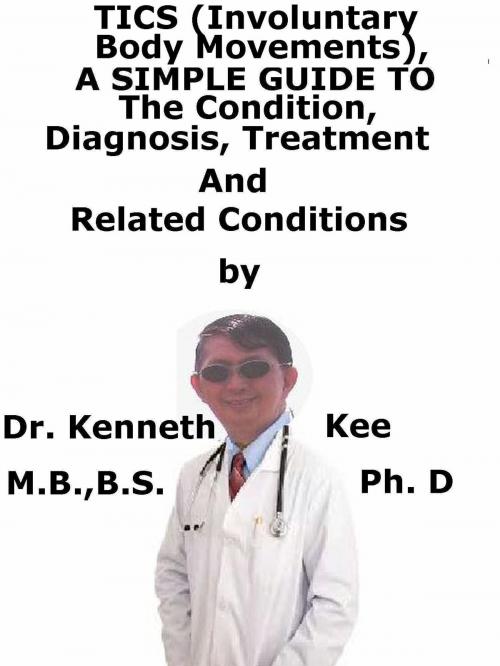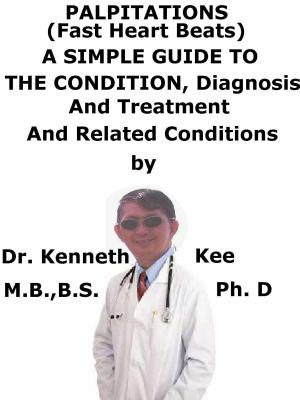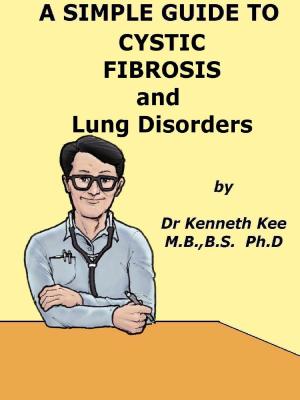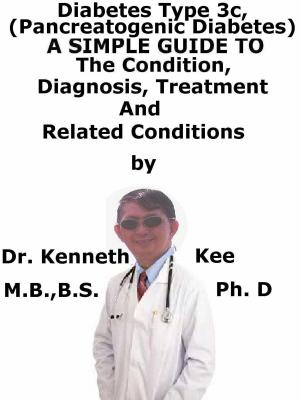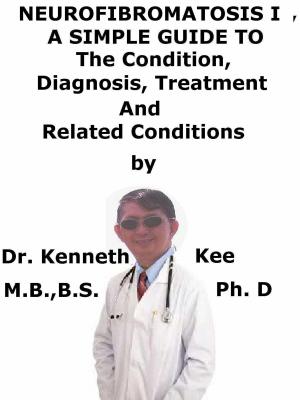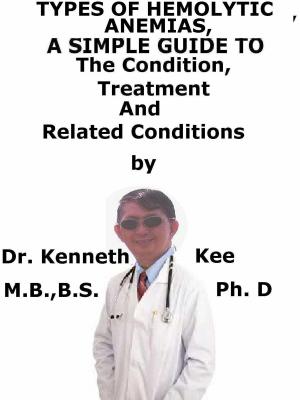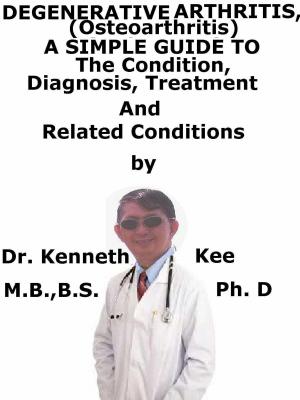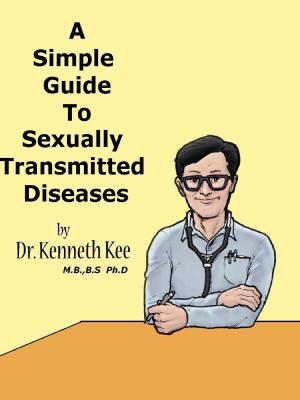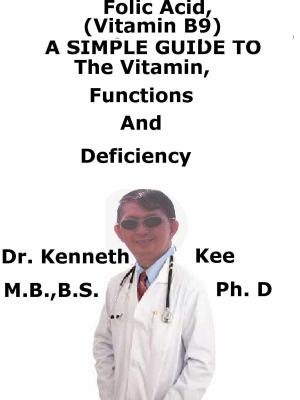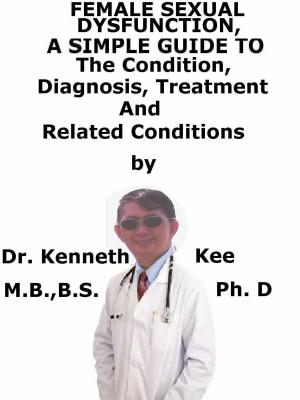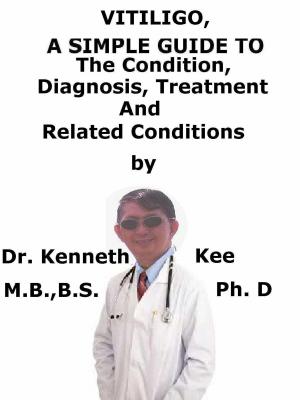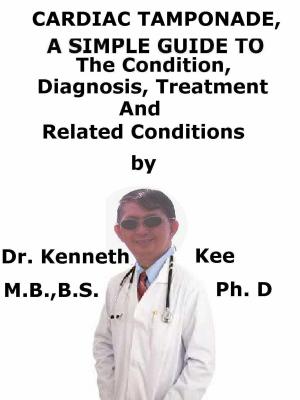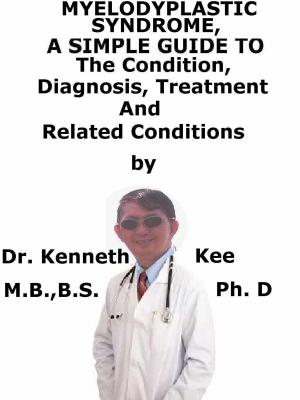Tics (Involuntary Body Movements) A Simple Guide To The Condition, Diagnosis, Treatment And Related Conditions
Nonfiction, Health & Well Being, Health, Ailments & Diseases, Nervous System & the Brain, Medical, Specialties, Internal Medicine, Neurology| Author: | Kenneth Kee | ISBN: | 9781370671588 |
| Publisher: | Kenneth Kee | Publication: | February 22, 2017 |
| Imprint: | Smashwords Edition | Language: | English |
| Author: | Kenneth Kee |
| ISBN: | 9781370671588 |
| Publisher: | Kenneth Kee |
| Publication: | February 22, 2017 |
| Imprint: | Smashwords Edition |
| Language: | English |
Tics are abrupt, purposeless, and involuntary vocal sounds or muscular jerks.
Tics are fast, repetitive muscle movements that result in sudden and difficult to control body jolts or sounds.
They are fairly common in childhood and typically first appear at around five years of age.
Very occasionally they can start in adulthood.
Tics are not normally serious and usually improve over time.
But they can be frustrating and interfere with everyday activities.
The cause of tics is not clearly known.
They are thought to be due to changes in the parts of the brain that control movement.
The basal ganglia are a group of specialized brain cells located deep inside the brain.
The cells help to control the body's movements.
In people with Tic disorders, it appears tics are the result of a temporary problem occurring inside the basal ganglia (brain cells group) which disrupts the decision-making process.
The person abruptly decides to have an involuntary urge to do a movement (the tic) that the conscious mind considers as both unwanted and unexplained.
Possible triggers
Genetics appears to play a part in some cases of Tics in Tic disorders, as it often runs in families.
Another theory is Tic formation may be linked to a childhood infection by streptococcal bacteria (bacteria that usually cause a sore throat).
In an attempt to fight off the infection, the immune system forms antibodies (proteins).
The antibodies may react with brain tissue, involving the brain's functioning.
Types of tics
1. Vocal (sounds) – such as grunting, coughing or shouting out words
2. Physical (movements) – such as jerking of the head or jumping up and down
They can also be:
1. Simple – making a small movement or uttering a single sound
2. Complex – making a series of physical movements or speaking a long phrase
Most people diagnosed with Tic disorders have a combination of physical and vocal tics, which can be both simple and complex.
1. Blinking, wrinkling the nose or grimacing
2. Jerking or banging the head
3. Clicking the fingers
4. Touching other people or things
5. Coughing, grunting or sniffing
6. Repeating a sound or phrase
Diagnosis can be obtained from the patient's history or getting the patient to bring a home video to show their behavior.
There is no cure for Tics, but treatment can help to control the symptoms.
Treatment is not always needed if a tic is mild and is not causing any other problems.
If a tic is more serious and can affect everyday activities, treatments that are directed to reduce how often tics occur may be advised.
Behavioral therapy
1. Habit reversal therapy – this aims to help the patient learn intentional movements that "compete" with tics, so the tic cannot happen at the same time.
2. Exposure with response prevention (ERP) – this aims to help the patient get used to the unpleasant sensations that are often felt just before a tic, which can stop the tic occurring
Medicine
Alpha2-adrenergic agonists are normally recommended for treatment of mild to moderate symptoms of Tic disorders such as Clonidine
Muscle relaxants have been shown to be effective in helping control tics, particularly physical tics.
Baclofen and clonazepam are two muscle relaxants that are sometimes used to treat Tic disorders.
Dopamine antagonists are the most successful form of medicine for the prevention of tics.
But they can cause a wide range of side effects.
Surgery is normally regarded as a 'treatment of last resort' for people with severe Tic disorders that has not reacted to other treatments.
Deep brain stimulation (DBS) requires permanent implantation of small electrodes
By stimulating certain areas of the brain the symptoms of Tic disorders can often be controlled.
TABLE OF CONTENT
Introduction
Chapter 1 Tics
Chapter 2 Causes
Chapter 3 Symptoms
Chapter 4 Diagnosis
Chapter 5 Treatment
Chapter 6 Prognosis
Chapter 7 Tourette Syndrome
Chapter 8 Seizures
Epilogue
Tics are abrupt, purposeless, and involuntary vocal sounds or muscular jerks.
Tics are fast, repetitive muscle movements that result in sudden and difficult to control body jolts or sounds.
They are fairly common in childhood and typically first appear at around five years of age.
Very occasionally they can start in adulthood.
Tics are not normally serious and usually improve over time.
But they can be frustrating and interfere with everyday activities.
The cause of tics is not clearly known.
They are thought to be due to changes in the parts of the brain that control movement.
The basal ganglia are a group of specialized brain cells located deep inside the brain.
The cells help to control the body's movements.
In people with Tic disorders, it appears tics are the result of a temporary problem occurring inside the basal ganglia (brain cells group) which disrupts the decision-making process.
The person abruptly decides to have an involuntary urge to do a movement (the tic) that the conscious mind considers as both unwanted and unexplained.
Possible triggers
Genetics appears to play a part in some cases of Tics in Tic disorders, as it often runs in families.
Another theory is Tic formation may be linked to a childhood infection by streptococcal bacteria (bacteria that usually cause a sore throat).
In an attempt to fight off the infection, the immune system forms antibodies (proteins).
The antibodies may react with brain tissue, involving the brain's functioning.
Types of tics
1. Vocal (sounds) – such as grunting, coughing or shouting out words
2. Physical (movements) – such as jerking of the head or jumping up and down
They can also be:
1. Simple – making a small movement or uttering a single sound
2. Complex – making a series of physical movements or speaking a long phrase
Most people diagnosed with Tic disorders have a combination of physical and vocal tics, which can be both simple and complex.
1. Blinking, wrinkling the nose or grimacing
2. Jerking or banging the head
3. Clicking the fingers
4. Touching other people or things
5. Coughing, grunting or sniffing
6. Repeating a sound or phrase
Diagnosis can be obtained from the patient's history or getting the patient to bring a home video to show their behavior.
There is no cure for Tics, but treatment can help to control the symptoms.
Treatment is not always needed if a tic is mild and is not causing any other problems.
If a tic is more serious and can affect everyday activities, treatments that are directed to reduce how often tics occur may be advised.
Behavioral therapy
1. Habit reversal therapy – this aims to help the patient learn intentional movements that "compete" with tics, so the tic cannot happen at the same time.
2. Exposure with response prevention (ERP) – this aims to help the patient get used to the unpleasant sensations that are often felt just before a tic, which can stop the tic occurring
Medicine
Alpha2-adrenergic agonists are normally recommended for treatment of mild to moderate symptoms of Tic disorders such as Clonidine
Muscle relaxants have been shown to be effective in helping control tics, particularly physical tics.
Baclofen and clonazepam are two muscle relaxants that are sometimes used to treat Tic disorders.
Dopamine antagonists are the most successful form of medicine for the prevention of tics.
But they can cause a wide range of side effects.
Surgery is normally regarded as a 'treatment of last resort' for people with severe Tic disorders that has not reacted to other treatments.
Deep brain stimulation (DBS) requires permanent implantation of small electrodes
By stimulating certain areas of the brain the symptoms of Tic disorders can often be controlled.
TABLE OF CONTENT
Introduction
Chapter 1 Tics
Chapter 2 Causes
Chapter 3 Symptoms
Chapter 4 Diagnosis
Chapter 5 Treatment
Chapter 6 Prognosis
Chapter 7 Tourette Syndrome
Chapter 8 Seizures
Epilogue
